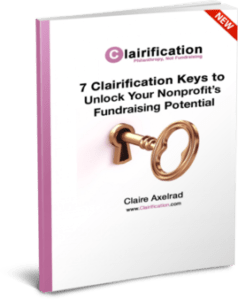
What if, through some simplification and organization, you could transform your life?
I’m wagering you’re too busy.
That means you’ve little space for adding new projects to your work plan for the coming year.
Never fear. Help is here!
First, let’s clear out some space.
I’ve participated in many a planning session, and seldom do I recall – if ever – really focusing first on what we could stop doing to make room for new endeavors. If this sounds familiar, you’re likely also familiar with the unfortunate consequences.
There are some things that really should not be part of your work plan moving forward. Or, at the very least, they should be pared down. Quite. A. Bit.
Here’s how you know you need, as Marie Kondo might say, to tidy up.
- Do you try to stuff too much into your work plan and end up doing nothing as well as you’d like?
- Do you allow daily clutter to crowd your inbox so you’re often responding to the little issues rather than the big ones?
- Do you keep working on things that no longer have the payoff they once had, causing you to miss out on newer and more cost-effective opportunities?
- Do you allow inertia to divert your focus towards ‘make work’ transactional stuff that satisfies your need to feel ‘busy,’ while you know it’s not really transformational work?
- Have you allowed your job to become overloaded with tasks you don’t enjoy, to the point where you feel a bit like a lobster in a pot?
What if you were to look at your work plan this year from the KonMari perspective?
If you’ve been living under a rock, Marie Kondo’s KonMari is the art of “tidying up to transform your life.” It’s a popular book that’s become a Netflix sensation, and it may not be your cup of tea, but…
What if, through some simplification and organization, you could transform your life (at least at work) as well as your nonprofit’s life — so all involved felt greater inspiration and even serenity?
You. Can. Do. It.
Today we’re going to look at 10 simple things: five “Not to Be” and five “To Be.”
The KonMari method places great importance on being mindful, introspective and forward-looking. Let’s begin there.
I’d like you to look at what’s currently on your plate.
Take a mindful, introspective approach. Should these tasks and projects BE, or NOT BE? One way Kondo suggests you can tell is to ask yourself whether these things ‘spark joy.’ Sure, you can’t love doing every task on your plate. But… if you dread almost everything you’re doing, you’re not going to do yourself or anyone else much service.
Sometimes there are ways to pare the less enjoyable tasks back somewhat. Or delegate them to someone who finds them more joyful than do you.
Sometimes there are tasks that are simply unnecessary, and you can get rid of them entirely.
NOT TO BE
1. Do not be a slave to the vampire email.
Email is sucking the life’s blood from your best laid plans—and your very self. What would it be like to actually put something into your work plan that mandated coming up with a policy to stop all the craziness we all talk about? I’m not referring here to external email you send to constituents (you should probably do more of that). I’m talking about diarrhea-like explosion of internal email. Anyone who goes away for a week knows the feeling of coming back to a train of 20 emails on the same subject that go round and round, usually getting nowhere fast. Or the emails where you are copied, or blind copied, and it’s unclear who is supposed to take action or offer feedback. In the end, the group gets together to meet in person to make a decision OR nothing happens. It’s maddening.
2. Do not be a victim of status quo thinking.
Doing what you’ve always done just because you’ve always done it is not strategic. It’s not forward-thinking. I wouldn’t even call it planning. It’s inertia. What if before you start adding in new strategies you were to go through last year’s plan with a fine tooth comb and take out anything that really isn’t working well for you anymore? This is a form of zero-based thinking that speaks to being fully present and conscious when you engage in the annual budgeting/planning process. You must begin with what you hope to accomplish this year; then look at your strategies (old and new) through this lens. If what you’ve done previously won’t really get you to your goal, then it’s time to let it go.
3. Do not be subscribing to news you can’t use or that doesn’t teach, entertain or refresh.
I must admit, this one really hits a personal nerve. I have at least a dozen magazine subscriptions piled up with unread copies since last autumn – and that’s just the hard copy stuff! Of course, I don’t want to encourage you to stop reading Clairification (!), but… it may be worth a resolution to allocate a certain amount of time for ‘professional development’ or ‘research’; then limit your subscription/blog reading to specified time slots. Continuing education is important, and like anything else worth doing it should be approached with mindfulness. Anything you don’t read/use after 3 – 6 months you can probably release (I’m going to go toss those old magazines right now).
4. Do not be doing work that’s not worth it.
Before you focus on doing things the right way, you must be sure you’re doing the right things. Anything that sucks up a tremendous amount of time, yielding relatively little, should probably fall off your list. This might mean rethinking special events, as they’re the least cost-effective way to do fundraising and every hour spent on events means a lost hour doing something with a potentially higher yield. This might also mean rethinking publications like annual reports that few people read. Or it might mean rethinking publication of donor honor roll lists that are immensely time-intensive to prepare accurately. Or, for you, it could be something else entirely.
5. Do not be doing complicated stuff that ignores the heart of the matter.
This is a corollary of #4, and a bit like the difference between cooking something from Mark Bittman’s “The Minimalist Cooks Dinner” (where most recipes have no more than five ingredients) and Julia Child’s Mastering the Art of French Cooking (where recipes can go on for pages and pages). Every now and then you want to do something multi-layered and detailed, but not all the time. It’s got to have a big payoff. I remember working with a committee to do a very complicated shopping benefit involving multiple vendors each offering to give a different % of their profits back to the charity. Some of the vendors didn’t want to attend, so volunteers were needed to staff their booths. Multiple staff were needed to calculate all the different percentages at check-out and fill in where there were insufficient volunteers. The 12 members of the committee and their friends attended and spent $35,000 buying designer clothing, jewelry, accessories, notions and lotions. The charity grossed $7,000. At one point, before things had gone too far, one committee member asked: What if we all gave $1,000 and just forgot about the event? There were about 15 members on the committee. No one listened.
TO BE
1. Do be investing more in online giving.
Online giving is the fastest growing giving channel per research by M+R. It’s still a much smaller percentage of giving than offline, but you don’t want to ignore it. As it grows so must your online fundraising strategies grow to keep pace. So you want to allocate more time and budget to this area. Donors of all ages are giving more online and users are finding you not just via your own email and website messaging but also via social media and search. This is not the year to simply tweak last year’s plan (which was likely a tweaked version of the previous year’s plan… and so on, and so on). Online’s influence extends far beyond fundraising transactions as more constituents engage in web-based communications, networking and advocacy.
2. Do be investing more in peer-to-peer engagement and fundraising.
This is the quickest, most direct way to create awareness, generate involvement, acquire new donors, upgrade existing donors and capture donor research. Don’t put all your marketing communications budget in advertising or hard-copy publications like newsletters, annual reports and brochures. People don’t care so much what you have to say. They care more about what their peers have to say – about your organization, about the cause and about the community they are creating. This holds especially true for younger generations. You must begin thinking about strategies that engage your supporters as active promoters and advocates.
3. Do be developing more strategic, constituent-centered content marketing plans.
People are bombarded with information, so it’s increasingly difficult to cut through the clutter and be heard. This is the year to get creative. What will make you stand out? What will really capture the hearts and imaginations of your constituents? Do you know enough about your supporters to know what will be relevant to them? Commit to putting some time into learning more about your friends; then creating content strategies so your communications really resonate. [Download this free Donor-Centered Content Marketing Worksheet & Checklist.]
4. Do be tailoring communication messaging and channels to match supporter preferences.
Supporters want information the way they want it. When you fail to pay attention to preferences, you wind up (1) ticking people off, and (2) wasting precious time and resources. This year commit to customizing more and offering options (email, snail mail, text, completely paperless, etc.). To really budget/plan effectively, it would be so useful to know in advance how many people want to receive a hard copy annual report or newsletter. Think about how you might be able to find out. [Check out What to listen for in donor onboarding from the Agitator-Donor Voice blog.]
5. Do be integrating your communication messaging by eliminating siloes.
If your organization has constituent communications segregated through different departments (e.g., development, marketing, customer service, programs, volunteers), this is the year to get on the same page. All these departments are making similar relationship-building and marketing decisions. If you’re not together, you’re duplicating resources and potentially weakening your brand through inconsistent messaging. Fundraisers must understand they no longer just write hard copy fundraising letters and grant proposals. They must write for the website, blog, e-news, email, social media, and more. All of your content must cater to multiple formats, while delivering a unique and tailored fit for your supporters. This is truly a case of ‘United We Stand; Divided We Fall.’
Can you name one thing you’ll start to be, and one thing you’ll stop being this year? If not, why not? Please share in the comments below.
Want to Unlock Your Nonprofit’s Potential?

Get fresh insights into how fundraising and marketing have changed, and what this means for you.
Get the 7 Clairification Keys with fresh insights into how fundraising and marketing have changed more in the past seven years than in the previous 50 – and what that means for you and your organization. You’ll learn to ‘clairify’ your (1) brand, (2) stories, (3) values, (4) social channels, (5) support constituencies, (6) engagement objectives and (7) resources/systems through a series of worksheets and individual and group exercise.
If finding sustainable sources of financing to ensure furtherance of your nonprofit mission is an ongoing struggle, it may be time to tinker with your system.
Begin today to solve the problems of tomorrow.
Image courtesy of Juraj Varga from Pixabay
-
Pingback: Writing digest: Notre Dame, sexual harassment in fundraising and more - 3rd Sector Mission Control





